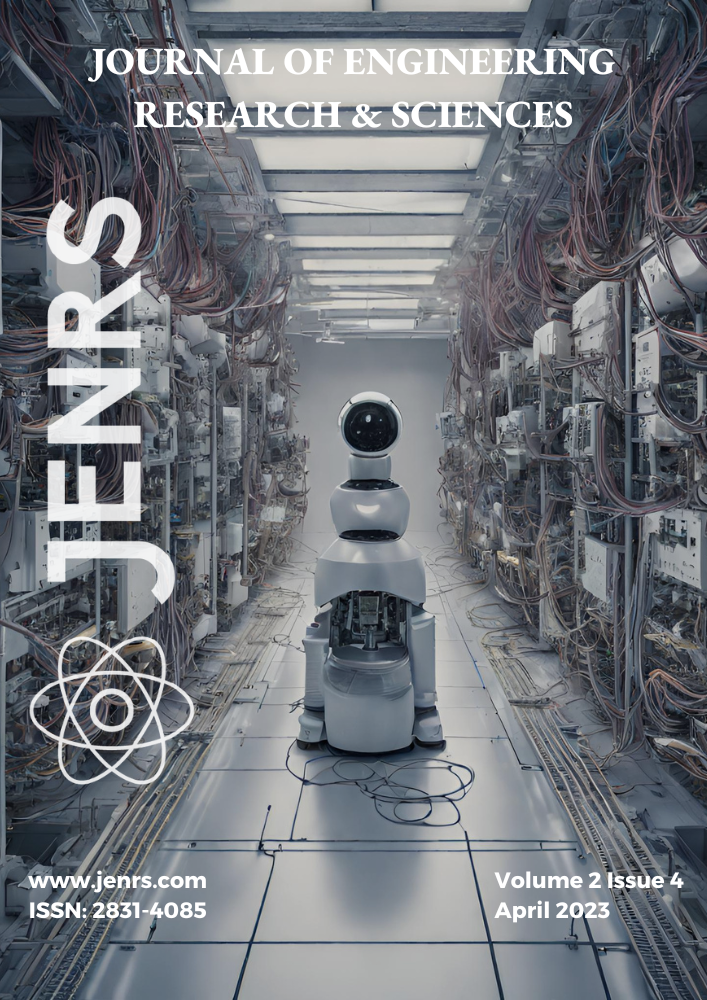
Volume 2, Issue 4
Download Complete Issue
This issue presents three new research papers about improving technology in different areas.
The first paper talks about a new tool that checks how well a big internet network is working. This tool makes it faster and easier to see if the network is giving customers the right amount of internet speed they paid for. The second paper describes new software for designing special electronic parts called amplifiers. These amplifiers are used in things like cell phones and radios. The software helps engineers make better amplifiers that use less power and work more efficiently. The third paper looks at ways to make computers better at understanding special pictures called hyperspectral images. These images contain a lot of information and are used in things like studying the environment or finding minerals. The researchers found new ways to help computers understand these complex images more accurately.
Front Cover
Publication Month: April 2023, Page(s): i – i
Editorial Board
Publication Month: April 2023, Page(s): ii – ii
Editorial
Publication Month: April 2023, Page(s): iii – iv
Table of Contents
Publication Month: April 2023, Page(s): v – v
Graph-based Tool for Bandwidth Estimation, Health Monitoring and Update Planning in Broadband Networks
Gian Paolo Jesi, Andrea Odorizzi, Gianluca Mazzini
J. Engg. Res. & Sci. 2(4), 1-13 (2023);
This paper focuses on the genesis and evolution of our specific Company tool. It is aimed to tackle the problem of verifying the health status and availability of residual bandwidth between any node over the Lepida ScpA broadband network. In fact, there must be a correspondence between active contractual obligations signed by local network operators and the physical bandwidth which we allocate. This is the key factor that must be addressed in the early phases when processing any bandwidth requests from local customers. Before the introduction of our tool, this verification process has been carried out almost manually with a substantial cost in terms of time. The adoption of this in-house developed tool allowed us to substantially shrink of the verification time required and to provide an overview of the network status. Our tool is grounded on building a graph representation of the network and on well known graph algorithms.
An Advanced Load-Line Analysis Software for use in the Design and Simulation of Microwave Low-Distortion, High-Efficiency and High-Power GaN HEMT Amplifiers
Yasushi Itoh, Takana Kaho, Koji Matsunaga
J. Engg. Res. & Sci. 2(4), 14-21 (2023);
An advanced load-line analysis software is devised for nonlinear circuit design and simulation of microwave low-distortion, high-efficiency and high-power GaN HEMT amplifiers. A single software package can incorporate DC, small- and large-signal performances of GaN HEMT devices, and then analyze nonlinear performance of amplitude-to-amplitude (AM-AM) and amplitude-to-phase (AM-PM) modulations, and finally evaluate intermodulation distortion (IMD) and error vector measurement (EVM). High speed and high accurate simulation become available with the use of behavioral modeling for representing nonlinear performance of GaN HEMT devices. In addition, the software employs a time-domain analysis using time-varying electrical waveform and thus give clear and deep insight into the nonlinear behavior of GaN HEMT devices as well as the nonlinear circuit design technique of low-distortion and high-efficiency amplifiers. In comparison with the harmonic-balance (HB) method, comparable performances have been successfully achieved for an L-band 10W GaN HEMT amplifier.
Classification of Rethinking Hyperspectral Images using 2D and 3D CNN with Channel and Spatial Attention: A Review
Muhammad Ahsan Aslam, Muhammad Tariq Ali, Sunwan Nawaz, Saima Shahzadi, Muhammad Ali Fazal
J. Engg. Res. & Sci. 2(4), 22-32 (2023);
It has been demonstrated that 3D Convolutional Neural Networks (CNN) are an effective technique for classifying hyperspectral images (HSI). Conventional 3D CNNs produce too many parameters to extract the spectral-spatial properties of HSIs. A channel service module and a spatial service module are utilized to optimize characteristic maps and enhance sorting performance in order to further study discriminating characteristics. In this article, evaluate CNN’s methods for hyperspectral image categorization (HSI). Examined the replacement of traditional 3D CNN with mixed feature maps by frequency to lessen spatial redundancy and expand the receptive field. Evaluates several CNN stories that use image classification algorithms, elaborating on the efficacy of these approaches or any remaining holes in methods. How do improve those gaps for better image classification?

